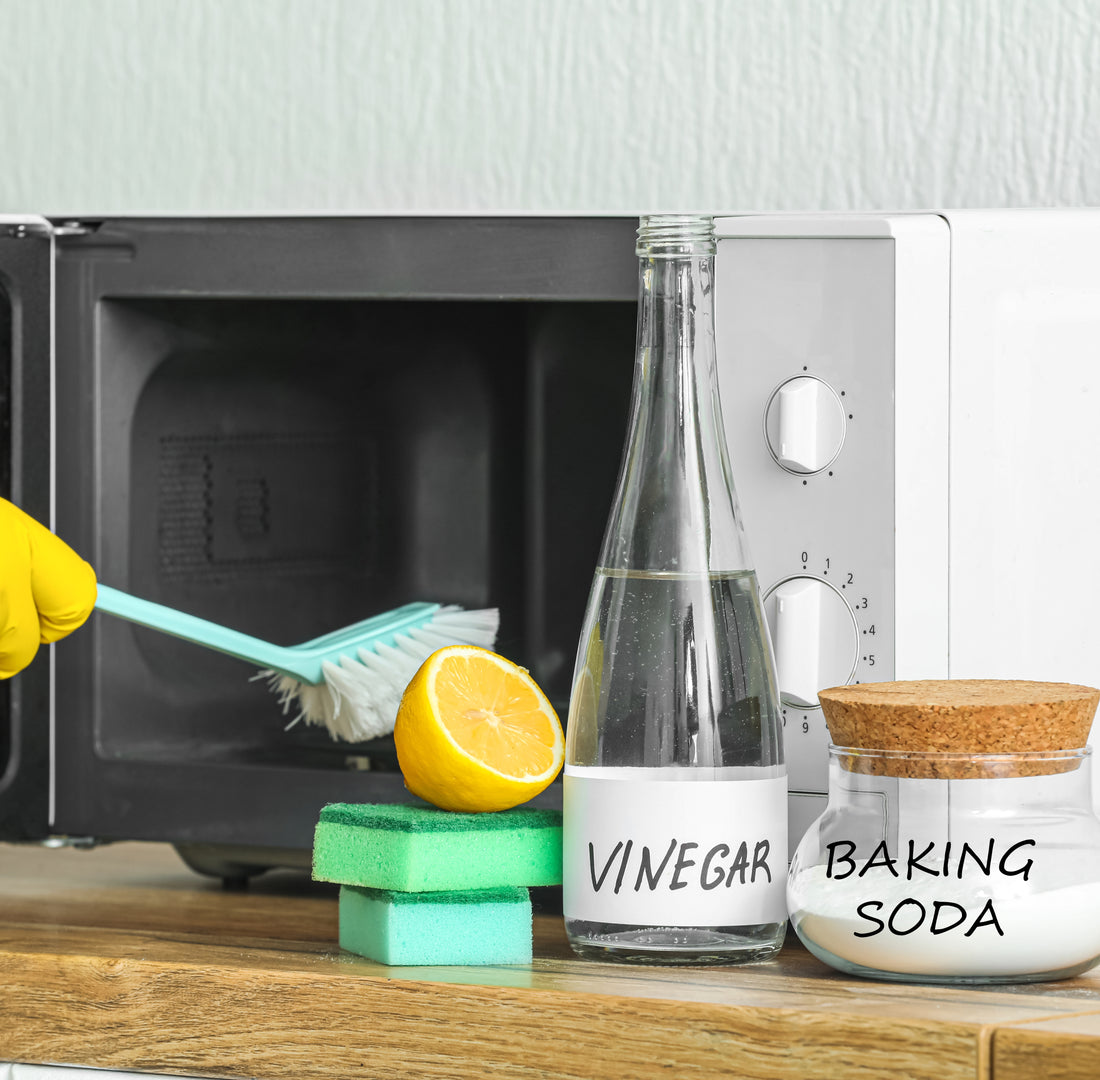The Ultimate Guide to Microwave Cleaning: Easy Lemon and Vinegar Tricks

Share
Microwaves are indispensable kitchen appliances, making meal preparation quick and easy. However, they can quickly become dirty from food splatters and spills, leading to unpleasant odors and unsanitary conditions. Keeping your microwave clean is essential for both hygiene and performance. In this guide, we'll explore simple and effective methods to clean and deodorize your microwave using natural ingredients like lemon and vinegar.
Why Clean Your Microwave?
Hygiene: Food particles left behind in your microwave can harbor bacteria and mold, leading to health risks.
Performance: A clean microwave operates more efficiently, ensuring even cooking and heating.
Odor Removal: Regular cleaning helps eliminate lingering food odors, keeping your kitchen smelling fresh.
Personal Tip: Cleaning your microwave frequently ensures it stays in top condition and prevents any buildup that can affect food quality.
Common Microwave Cleaning Challenges
Stubborn Food Splatters: Heated food can splatter and harden on the microwave walls, making them difficult to remove.
Unpleasant Odors: Spilled food and liquids can leave behind strong odors that linger.
Grease Buildup: Greasy foods create a sticky residue that attracts dirt and bacteria, making it harder to clean.
Personal Tip: Regular maintenance prevents these issues, making deep cleaning easier and quicker.
Effective Cleaning Methods
Step 1: Gather Your Supplies
- Lemon: A natural deodorizer and cleaner.
- White Vinegar: A powerful cleaner that cuts through grease and grime.
- Water: Essential for creating the cleaning solution.
- Microwave-safe Bowl: To hold the cleaning solution.
-
Microfiber Cloth or Sponge: For wiping down surfaces.
Personal Tip: Always have these basic supplies on hand for quick and easy microwave cleaning.
Step 2: Basic Clean with Lemon
- Prepare the Solution: Fill a microwave-safe bowl with water and add slices of one lemon.
- Heat the Solution: Microwave the bowl on high for 3-5 minutes. The steam from the lemon water will loosen food particles and grease.
- Wipe Down the Interior: Remove the bowl carefully and use a microfiber cloth or sponge to wipe down the interior. The steam will make it easier to remove food splatters and grease.
-
Deodorize: The lemon leaves a fresh, clean scent in your microwave.
Personal Tip: Add a few drops of essential oils, like lavender or eucalyptus, for an extra fresh scent.
Step 3: Deep Clean with Vinegar
- Prepare the Vinegar Solution: Mix equal parts white vinegar and water in a microwave-safe bowl.
- Heat the Solution: Microwave the bowl on high for 2-3 minutes until it starts to steam.
-
Wipe Down the Interior: Remove the bowl and wipe down the interior with a microfiber cloth. Vinegar cuts through grease and eliminates odors.
Personal Tip: For stubborn stains, leave the vinegar solution inside for an additional 5 minutes before wiping it down.
Step 4: Stubborn Stains and Grease
- Baking Soda Paste: For tough stains, make a paste with baking soda and water. Apply it to the stains, let it sit for a few minutes, then scrub gently with a cloth or sponge.
-
Wipe Away the Paste: Use a damp cloth to wipe away the baking soda residue.
Personal Tip: A mixture of vinegar and baking soda can create a powerful foaming action that helps lift and remove tough stains.
Preventative Maintenance
- Cover Food: Use a microwave-safe cover to prevent food splatters.
- Regular Wipe Downs: After each use, wipe down the microwave to prevent buildup.
-
Monthly Deep Cleans: Perform a deep clean using lemon or vinegar once a month to keep your microwave in top condition.
Personal Tip: Place a microwave-safe paper towel under food containers to catch spills and drips for easier cleanup.
Common Mistakes to Avoid
- Using Harsh Chemicals: Avoid abrasive cleaners that can damage the microwave's interior.
- Overheating Cleaning Solutions: Be careful not to overheat cleaning solutions as they can cause burns when removed.
-
Neglecting the Exterior: Clean the microwave’s exterior, including the control panel and door, to keep it looking new.
Personal Tip: Never use metal scouring pads, as they can scratch and damage the microwave surface.
Benefits of Regular Cleaning
- Enhanced Appearance: A clean microwave looks better and is more inviting to use.
- Improved Efficiency: Clean appliances work more effectively and last longer.
-
Healthier Environment: Regular cleaning reduces the risk of foodborne illnesses.
Personal Tip: Regularly clean and inspect the microwave door seal to ensure it closes properly and maintains efficiency.
Additional Tips and Tricks
- Microwave Your Sponge: Microwaving your sponge for 90 seconds on high can reduce bacteria by up to 99%.
- Use Natural Cleaners: Stick to natural cleaners like lemon and vinegar to avoid harsh chemicals.
-
Microwave-Safe Covers: Use covers to prevent food splatters and keep the interior cleaner for longer.
Personal Tip: Set a reminder to deep clean your microwave monthly for consistent hygiene and performance.
By incorporating these simple and effective steps into your microwave cleaning routine, you can maintain a clean, fresh, and efficient kitchen appliance. Using natural ingredients like lemon and vinegar provides an eco-friendly and safe way to keep your microwave in top condition, ensuring better performance and a healthier kitchen environment.


